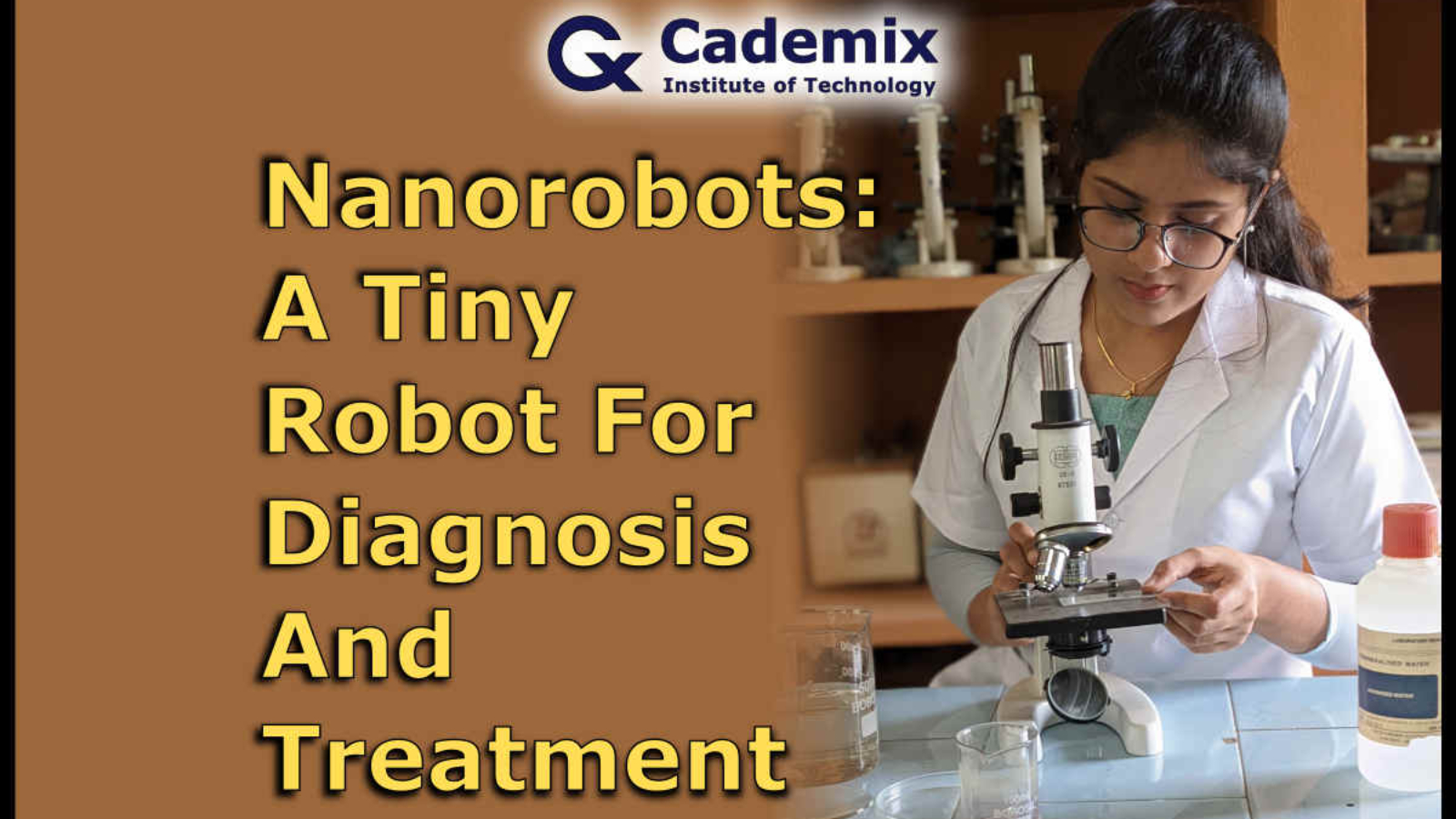Nanorobotics is a branch of nanotechnology. It is all about creating molecular devices, called nanorobots. Nanorobots are devices built up entirely of nanoscale components. These devices have a variety of biomedical applications. They are useful in the targeted drug delivery. Furthermore, they may help in the diagnosis and treatment of high-risk diseases in the future. They are applicable in cancer treatment, biosensing, medical surgery, and so on. Moreover, they can mimic some biological systems. They can act as artificial oxygen carriers, cell repairing device, blood clotting device, and so on. This article will help you to gain basic idea about nanorobots and their biomedical applications. In addition, this article will assist you in developing research ideas by addressing gaps and challenges in current nanorobotic research.
Rosemary Salin, Cademix Institute of Technology
Introduction
Almost every sector makes use of robots. There are different types of robots. In fact, a large number of robots are used in industries as well as in our daily life. Basically, they help us to reduce physical efforts and make the task simpler. However, when most people think of robots, they think of industrial robotic arms, military robots, or other robotic systems. That is, they think of big robots. But, there is a certain type of robot (nanorobots) that we cannot see with our naked eyes. They are also a branch of robotics. They come under research robots. These robots have a variety of applications in medical sector. Before we talk about nanorobots, let us define nanotechnology.
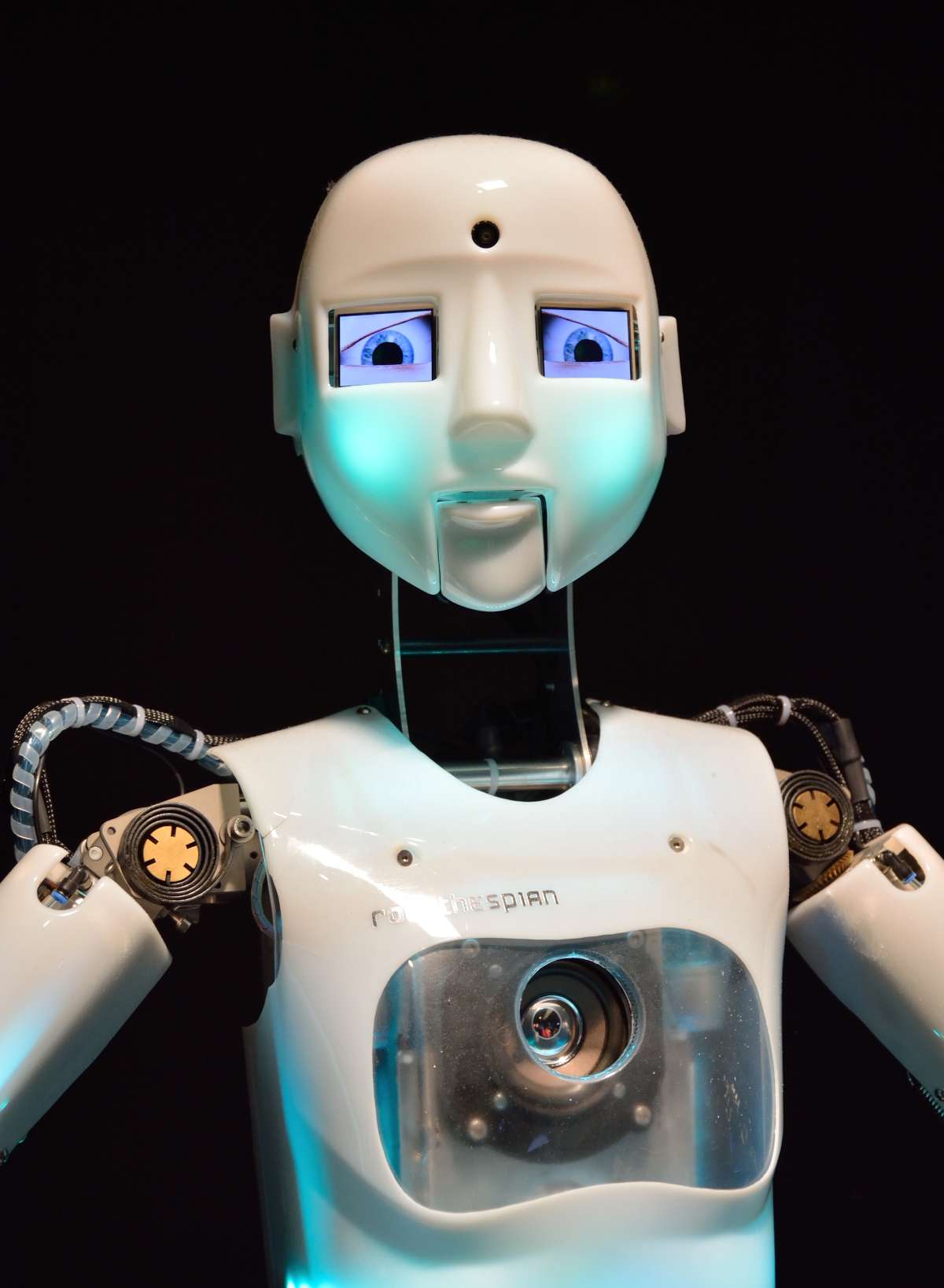
What is Nanotechnology?
Nanotechnology is the study of science, engineering, and technology at the nanoscale, which ranges from 1 to 100 nanometers. That is, the research and use of very small objects. A nanometer (nm) is one-billionth of a meter. While, the nanoscale range is from 1 to 100 nanometers. To put that scale into context, the size of a nanometer in comparison to a meter is the same as the size of a marble in comparison to the size of the earth. At this nanoscale, materials begin to behave quite differently, resulting in surprising new properties. For example, carbon nanotubes are one hundred times stronger than steel while yet being significantly lighter.
One important term in nanotechnology is nanomaterials. They are materials with at least one dimension in nanoscale. There are natural and manmade nanomaterials. In fact, nature has a plethora of nanomaterials. For example, the structure of viruses, the wax crystals covering a lotus leaf, natural colloids like milk and blood, peacock feather are natural nanomaterials. On the other hand, examples for engineered nanomaterials are carbon nanotubes, graphene, fullerenes, nanowires.
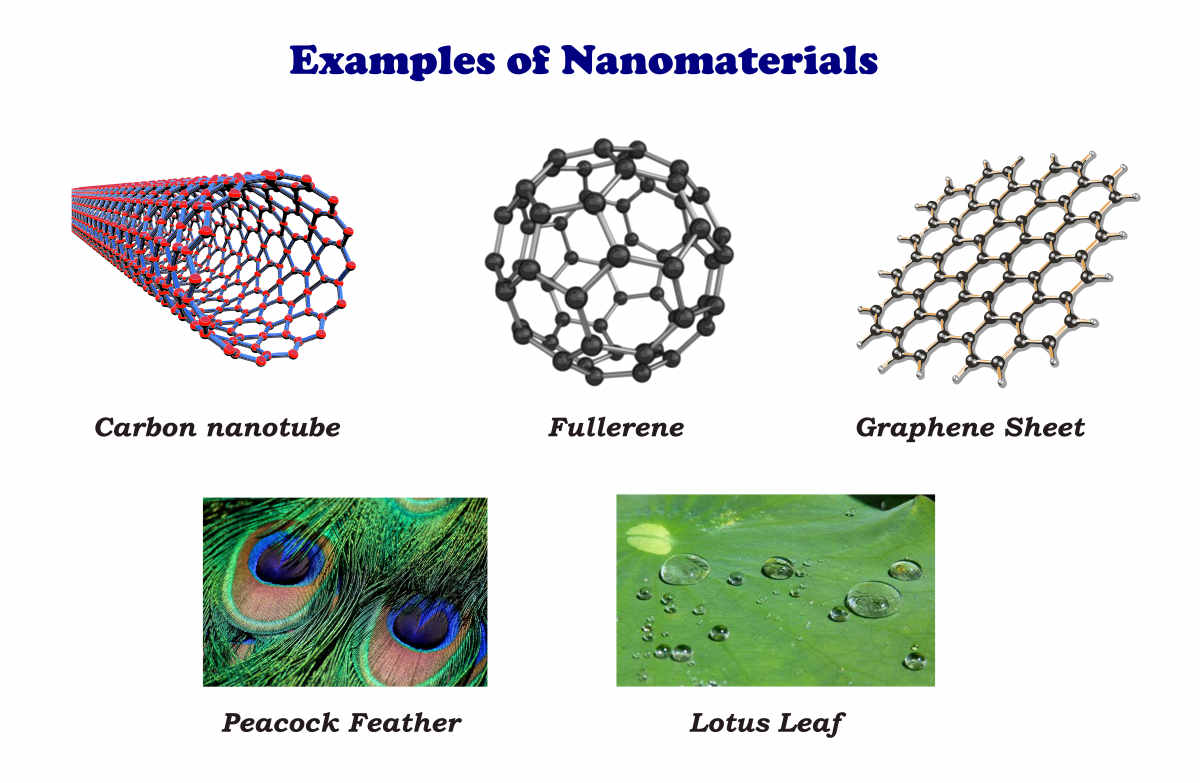
Nanotechnology has many applications in fields such as medicine, electronics, robotics, cosmetics, engineering, and so on. As a result, several branches such as nanomedicine, nanoelectronics, nanorobots, and so on have emerged. Let us focus on nanorobots and their medical applications.
What are Nanorobots?
Nanorobots are devices with approximate sizes ranging from 0.1 to 10 micrometers. In other words, it is a robot that can interact with nanoscale objects or manipulate them with nanoscale precision. They are made up of components having nanoscale dimensions. Nanobots, nanoids, nanites, nanomachines, and nanomites are other names for such devices. They are mostly still in the research and development stage. However, some basic nanorobots are developed and tested.
Components of Nanorobots
Power supply, fuel buffer tank, sensors, motors, manipulators, onboard computers, pumps, pressure tanks, and structural support are the different components of a nanorobot. A nanorobot’s substructures include:
- Payload: This hollow region contains a little amount of drug. The nanorobots will move through the blood and deliver the drug to the preferred site.
- Micro camera: It helps the operator in directing the nanorobot through the body.
- Electrodes: Using the electrolytes in the blood, the electrodes on the nanorobot can form a battery. These electrodes are also able to destroy cancer cells. It is done by creating an electric current and heating the cells to death.
- Lasers: They have the ability to burn artery plaque, blood clots, or cancer cells.
- Ultrasonic signal generators: They are used when nanobots are used to locate and destroy kidney stones.
- Swimming tail: In order to enter the body and travel against the blood flow, nanorobots will require a form of propulsion. They will have motors for movement and manipulator arms or mechanical legs for mobility.
Types of Nanorobots
Basically, there are two types of nanorobots: assemblers and self-replicators.
- Assemblers: They have the shape of cells. They can interpret various types of molecules or atoms.
- Replicators: These are nanobots with the ability to multiply themselves fast.
However, some researchers categorise nanorobots in drug delivery and treatment based on their uses. They are listed below.
- Respirocyte: It is an artificial oxygen carrier nanorobot. They act similarly to red blood cells in human bodies, but with a relatively larger oxygen load.
- Chromallocyte: They are cell-repair robots. They will replace entire chromosomes in individual cells. As a result, they will be able to cure the effects of genetic disease as well as other forms of accumulated damage to our genetic material.
- Pharmacyte: They can carry drugs in their tanks. So, they act as drug delivery devices.
- Microbivores: They can destroy certain types of bacteria.
- Clottocyte: They play a role comparable to platelets in human blood. Platelets have the unique property of aggregating in a wound to form a clot, blocking blood flow.
Biomedical Applications of Nanorobots
The major area of application of nanorobots is in the medical industry. They are likely to offer novel therapies for people suffering from a variety of diseases. Medical nanobots can help in diagnosis, and treatment of a wide range of diseases. Nanorobots are so small that they interact on the same level as bacteria and viruses do. As a result, they are capable of merging with tiniest particles of our body, such as atoms and molecules. The development of perfect nanobot has not yet been possible. But, the development of such a nanorobot will mark a significant step in the history of science. Because, they can have unique applications in diagnosis and treatment. In the next part, we will discuss the various biomedical applications of nanorobots. Furthermore, you will see the challenges in practical application of them.
Drug Delivery
The limited release of drugs selectively to diseased cells has been a major restraint in traditional drug-delivery systems. To obtain precise drug delivery to specific disease sites, drug carriers must have certain particular qualities. It consists of a pushing force, regulated navigation and release, and tissue penetration. These are still unmet limitations of existing drug delivery systems. However, nanorobots offer a novel and exciting class of delivery vehicles that can satisfy the above requirements.
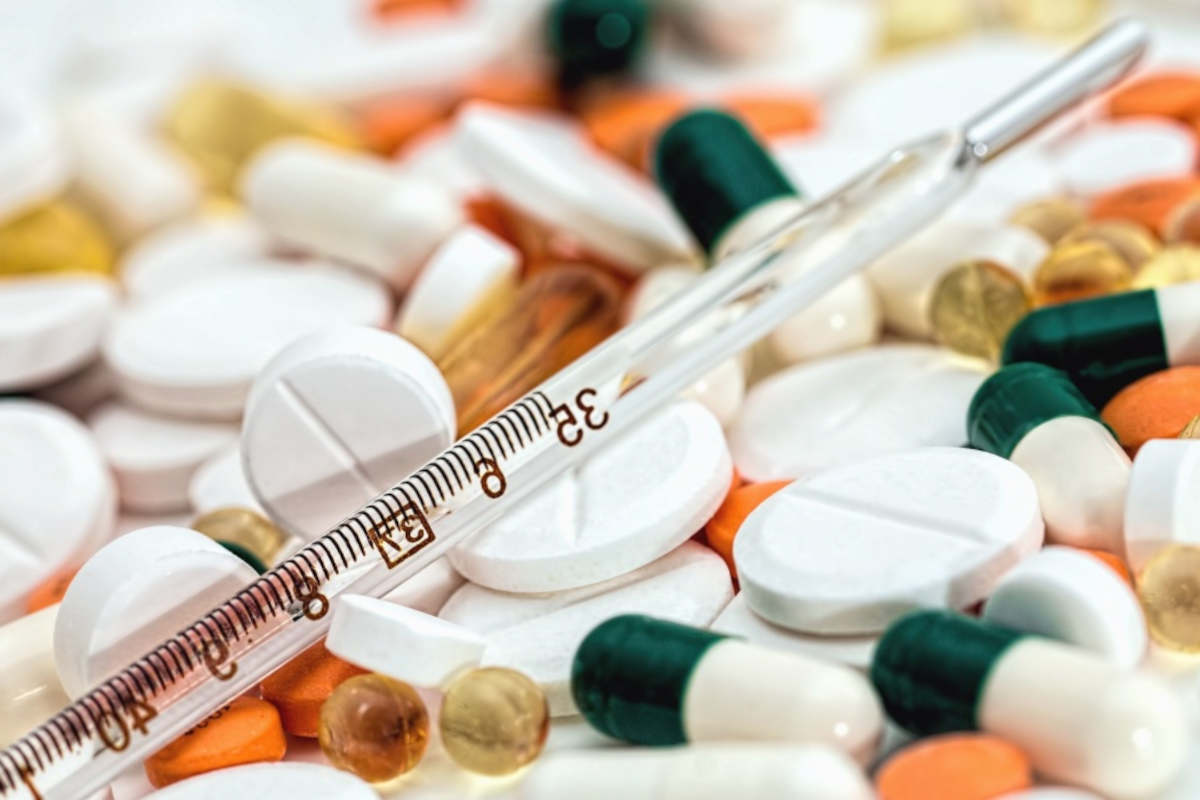
A sensing agent and a payload are the two main components of most nanobots. The sensing agent might be one or more chemical strands. The targeted cell has some features that can activate each strand of the sensing agent. When the sensing agents are activated, the nanobots deliver the payload to the desired cell. Furthermore, the payload contains a drug for treatment. Moreover, these molecular delivery vehicles may be programmed to release their payload only when the targeted cell is ill.
Nanomotors (motor-like nanobots) can quickly transport and deliver therapeutic payloads directly to disease sites. As a result, they increase therapeutic efficacy and decrease the side effects of toxic drugs. To prove the delivery function and performance of these nanorobots, several investigations have been conducted in test tubes and in vitro conditions. Although most of these researches have been done in vitro, basic in vivo trials are currently ongoing. For example, magnetically directed nanorobots were used to deliver fluorouracil medicine to a mice model to reduce tumor growth.
Precision Surgery
Robotic systems are used to minimize the challenges involved with complex surgical procedures. They also help to expand the capabilities of human surgeons. This type of robot-assisted surgery is a fast expanding area. It enables doctors to conduct a wide range of minimally invasive surgeries with high precision, flexibility, and control. These tiny robots can travel throughout the human body. Moreover, they can function in numerous difficult-to-reach tissue areas. As a result, they can address many health issues. We can expect these tiny surgeons in near future.
Nanorobots in Biosensing
Nanomotors can detect and separate biological organisms from a mixture of materials. It is possible through an antigen-antibody, complementary pairing, or donor-receptor mechanism. The nanomotors will be functionalized with distinct bioreceptors for this purpose. These receptor-functionalized nanomotors provide strong binding with their complementary system. As a result, sensing is possible. For instance, tubular microrockets loaded with targeting ligands, such as antibodies, aid in the detection of specific cancer cells.
Cancer Diagnosis and Treatment
Early diagnosis of cancer will help to cure it. Nanorobots with a chemical biosensor (nanosensor) help to identify cancer cells in the early stages of development. This nanosensor will detect cancerous cells in the body. Thus, certain nanobots can help in the early diagnosis of cancer in the future.
Although early diagnosis is important, the more important thing is the treatment. There are various types of cancer treatments. But, they all have some serious drawbacks. Firstly, the anticancer drugs may cause damage to the normal cells. Similarly, we are aware of the side effects of chemotherapy. Because of the ability of nanorobots to move within human bodies, they may be useful in cancer therapy. We have already discussed the use of nanobots in targeted drug delivery. We can use this in cancer therapy too.
Moreover, we can all use them to kill cancer cells. For instance, researchers from Arizona State University showed how nanobots can destroy cancer cells using a mouse tumor model. DNA nanostructures (DNA folded to a size of 90nm) and the blood-clotting enzyme thrombin were used to create them. They attack a protein called nucleolin. This protein is only found on the surface of cancer cells. The nanobots release thrombin into the cancer cell after attaching to it. Then, this prevents the blood supply to the cancer cells. Hence, kills the cancer cells. As a result, the experiment was a success, leaving the normal cells unaffected.
Artificial Oxygen Carrier (Respirocyte)
You have already seen the respirocyte in the classification of nanorobots. Let us discuss them in detail. We know that they act as red blood cells. It is an imaginary nanorobot that floats in the bloodstream. It is basically a tiny pressure tank that can be filled with oxygen and carbon dioxide molecules. Moreover, a controlled release of these gases from the tank is possible.
Gas concentration sensors are located outside each nanorobot. The oxygen partial pressure is high and the carbon dioxide partial pressure is low in the lung capillaries. As a result, the nanobots will load it with oxygen and discharge the carbon dioxide. When the partial pressure of carbon dioxide is very high and the partial pressure of oxygen is relatively low, this will reverse. As a result, respirocytes mimic the activity of normal hemoglobin-filled red blood cells. They can, however, provide 236 times more oxygen per unit volume than a genuine red blood cell.
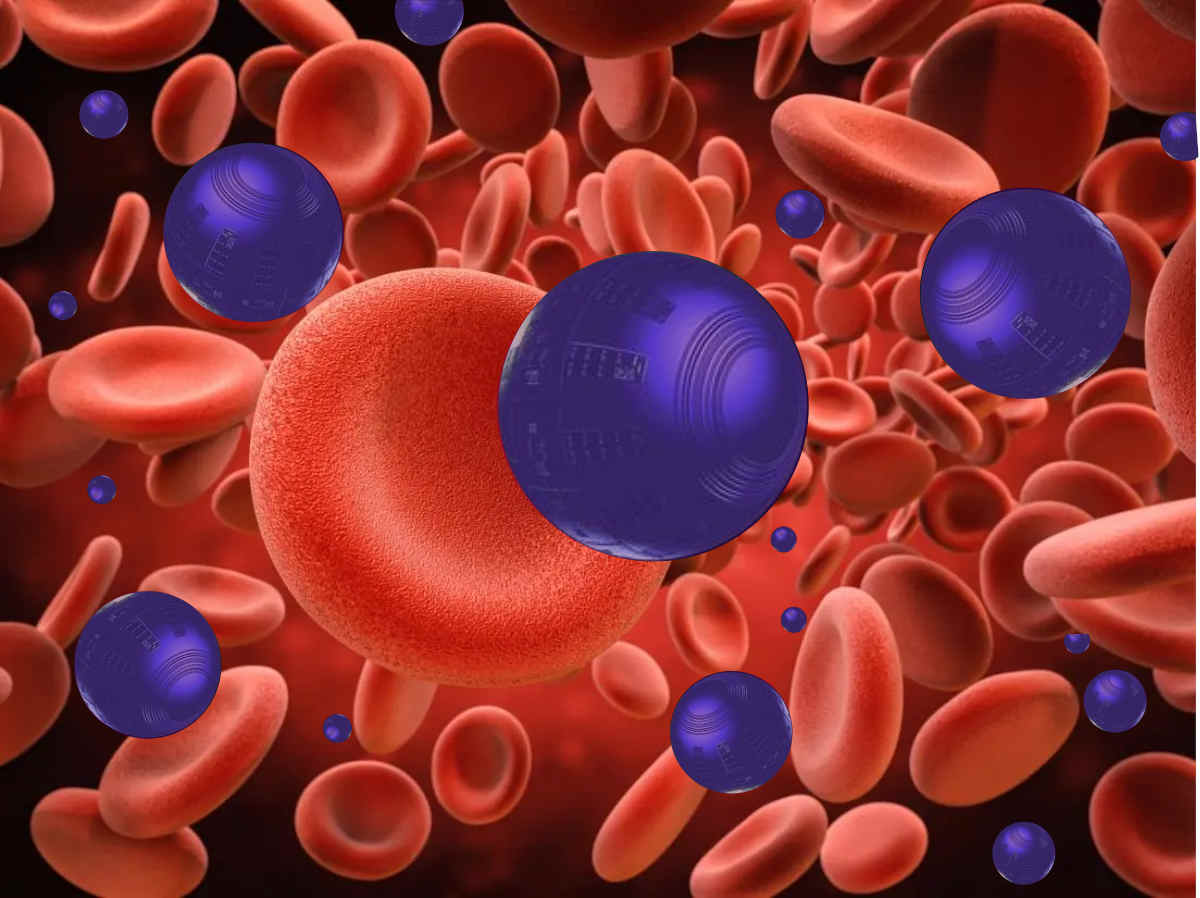
Hype vs. Reality
There are lots of hypes and claims related to the applications of nanorobots. According to some researchers, tiny nanorobots might be flowing through your bloodstream within the next ten years. A vast number of suggestions for the possible use of nanorobots in medicine are arising. Furthermore, nanotechnologists expect that these tiny robots will be commercialised in the near future. Actually, DNA robots are already being tested in animals to identify and destroy cancer cells.
However, commercialising nanorobots is not as simple as that. Because there are several challenges in using nanorobots in the human body. In the next part, we will look at these challenges. As we all know, new drugs take up to 15 years of testing before they get approval. As a result, nanorobots, as an external device injected into human bodies, will require significantly longer time to obtain approval for use. Furthermore, people’s readiness to accept the usage of a new treatment method should be considered.
Meanwhile, expectations for nanomedicine remain high. Over the last decade, the expected commercial potential has not declined or even stayed constant. But it has only increased. As a result, it is fair to assume that the expectations and predictions for nanorobotics will likewise come true in the future.
Challenges and Future Scope in Nanorobotics
Nanorobots might be a new, supporting, and hopeful machine technology for patients in the treatment and diagnosis of life-threatening illnesses. The focus in the medical field will move from medical science to medical engineering in the future, with nanorobotics as the revolution. Future efforts will be necessary to move nanorobots from test tubes to living organisms. Nanorobots have already been shown to work well in viscous biological fluids such as gastric juice and whole blood. Because of the foreign nature of nanobots in humans, operating them in human tissues and organs requires careful examination.
The nanomotors for in vivo applications should be much smaller in order to allow their transport into cells and capillaries with narrow dimensions. Furthermore, it is critical to address biocompatibility concerns. Therefore, nanobots that can self-decompose into harmless compounds after completing a task would be incredibly useful. Moreover, the human body will resist any foreign material. Anyone interested in this field should be aware of the challenges. Because understanding the difficulties will allow you to contribute to research in nanorobots. As a result, they can fill gaps in the research.
Solving these special demands will result in a faster translation of nanorobot research into medical applications. We believe that with close collaboration between the nanorobotic and medical communities, these problems may be solved progressively, eventually broadening the range of nanorobots in medicine.
Bibliography
[1] S. Kumar S, “Nanorobots a future Device for Diagnosis and Treatment,” J. Pharm. Pharm., vol. 5, no. 1, pp. 44–49, 2018, doi: 10.15436/2377-1313.18.1815. [2] Z. Wu, Y. Chen, D. Mukasa, O. S. Pak, and W. Gao, “Medical micro/nanorobots in complex media,” Chem. Soc. Rev., 2020, doi: 10.1039/D0CS00309C. [3] R. Tripathi and A. Kumar, “Application of Nanorobotics for Cancer Treatment,” Mater. Today Proc., vol. 5, no. 3, pp. 9114–9117, 2018, doi: 10.1016/j.matpr.2017.10.029. [4] J. Li, B. E. F. De Ávila, W. Gao, L. Zhang, and J. Wang, “Micro/nanorobots for biomedicine: Delivery, surgery, sensing, and detoxification,” Sci. Robot., vol. 2, no. 4, pp. 1–10, 2017. [5] A. Manjunath and V. Kishore, “The Promising Future in Medicine: Nanorobots,” Biomed. Sci. Eng., vol. 2, no. 2, pp. 42–47, 2014, doi: 10.12691/bse-2-2-3. [6] V. N. Rao, “Nanorobots in Medicine-A New Dimension in Bio Nanotechnology,” Trans. Networks Commun., vol. 2, no. 2, pp. 46–57, 2014, doi: 10.14738/tnc.22.131.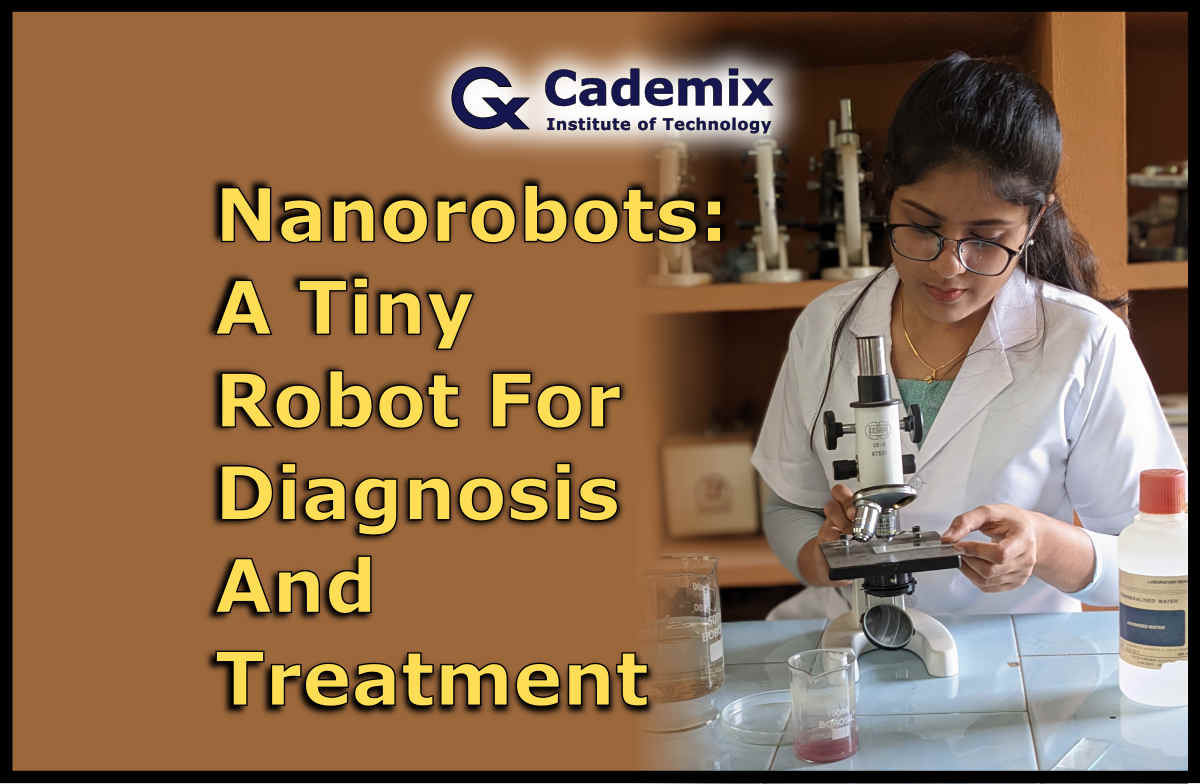
About the Author
Rosemary Salin is an Associate Chemist at Cademix Institute of Technology, Austria with a Master of Science in Chemistry. Her interests include studying scientific problems and finding different solutions to them through experiments.
Furthermore, she was a recipient of the INSPIRE (Innovation in Science Pursuit for Inspired Research) Scholarship from 2016 to 2021. It is a scholarship program implemented by the Department of Science and Technology (DST), Government of India. It is given to deserving students doing bachelor’s and master’s courses in Natural and Basic Sciences. Moreover, she is a member of the Cademix Career Autopilot Program. She is available for new opportunities. Please feel free to contact her.
E-mails:
rosemary.salin@cademix.org
rosemarysalin99@gmail.com
Linkedin:
https://www.linkedin.com/in/rosemary-salin/
Keywords Related To Nanorobots
Nanotechnology, Nanorobotics, Nanomedicine, Nanoparticles, Nanoscale, Nanomaterials, Nanometer, Nanoparticle, Nanoscience, Carbon nanotube, Fullerene, Assemblers, Payload, Replicators, Respirocytes, Chromallocyte, Pharmacyte, Microbivores, Clottocyte, Nanomotors, Biosensing.

